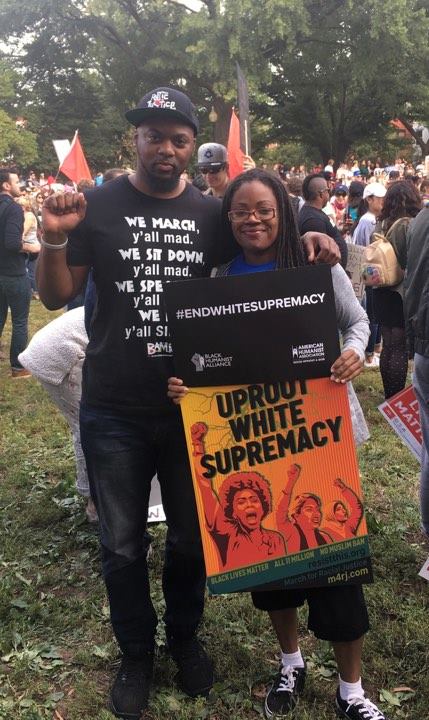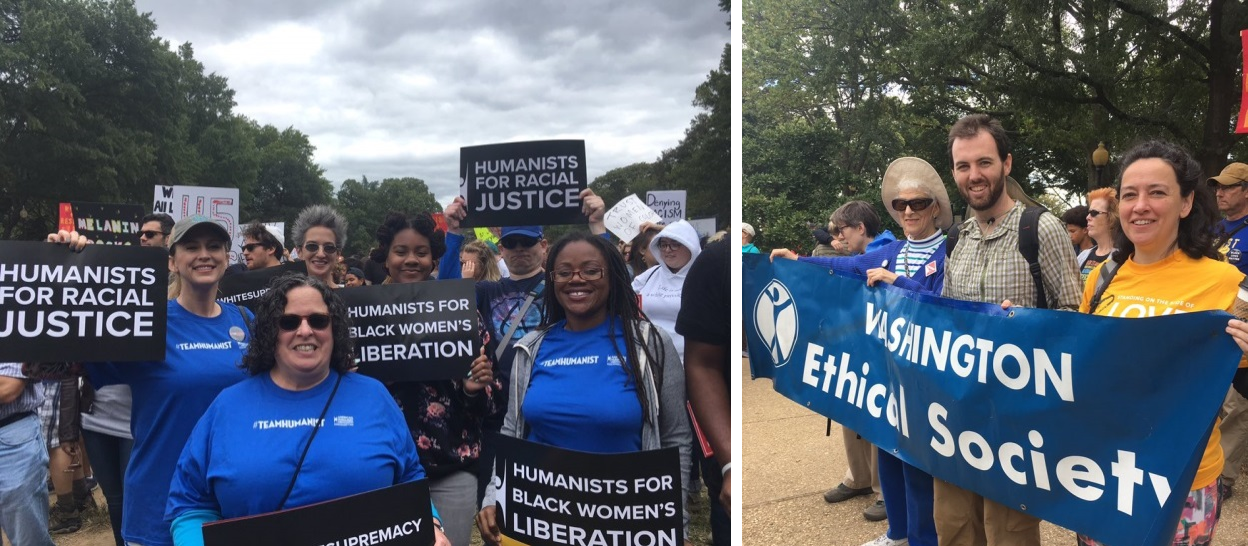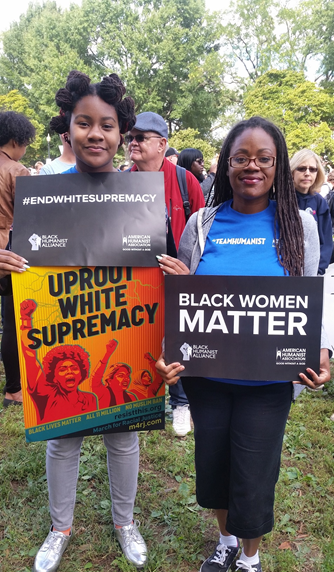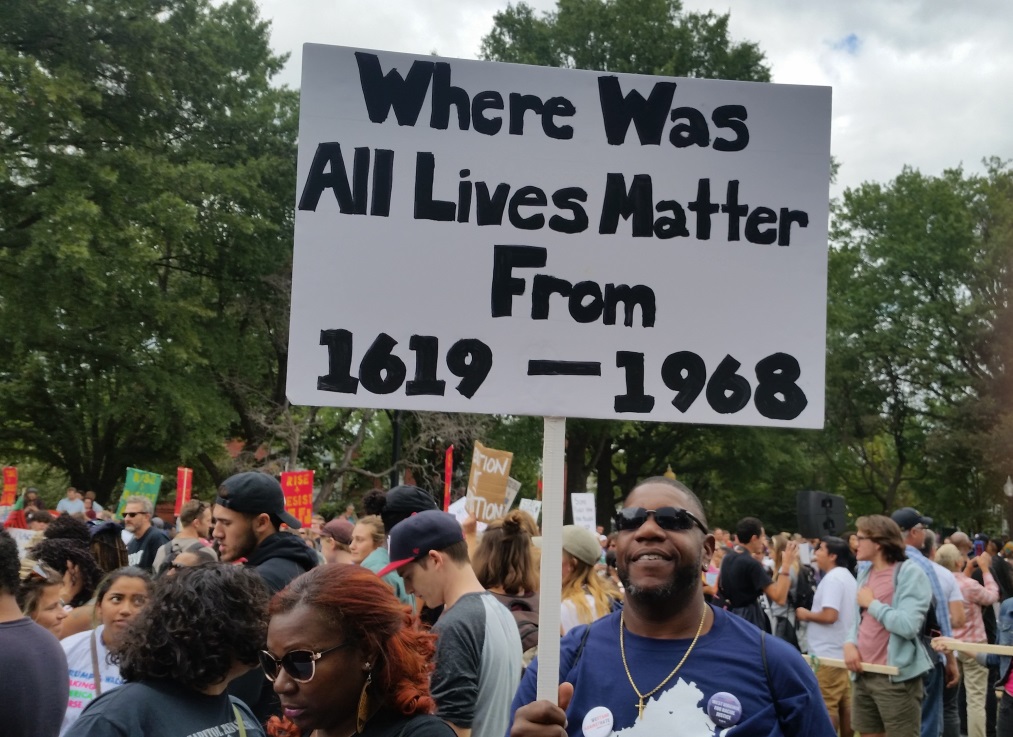M4RJ and March for Black Women a Step in the Right Direction on a Long Path
On September 30, thousands of people rallied together for two intersecting social justice marches in the nation’s capital: the March for Black Women and the March for Racial Justice. Both events took place in cooperation with one another, each holding its own rally and then converging at Lincoln Park to march together to the Justice Department and the National Mall.
The date September 30 was selected by march organizers to commemorate the 1919 Elaine massacre, the bloodiest racial conflict in the history of the United States.
 The unjustified murder of Philando Castile at the hands of a Minnesota police officer in July 2016 and the officer’s subsequent acquittal in June—an infuriating yet predictable outcome that reminds us there can be no justice when police face no consequences for murdering Blacks—served as the impetus for the March for Racial Justice, organizer Dorcas Davis told the Washington Post.
The unjustified murder of Philando Castile at the hands of a Minnesota police officer in July 2016 and the officer’s subsequent acquittal in June—an infuriating yet predictable outcome that reminds us there can be no justice when police face no consequences for murdering Blacks—served as the impetus for the March for Racial Justice, organizer Dorcas Davis told the Washington Post.
Concerned that the march may ignore certain intersecting issues of race and gender, the March for Black Women was conceived to emphasize not only police violence but also significant issues like reproductive justice, sexual assault, and healthcare access.
Smaller satellite marches also took place in communities across the country.
The American Humanist Association was a proud partner with the co-occurring marches and coordinated a gathering of humanist demonstrators along with the Washington Ethical Society. As mentioned in the AHA’s press release regarding its support for the marches, there can be no compromise between racial justice and white supremacist ideologies embedded into the social structures of the United States that pathologize, criminalize, and disenfranchise racial minorities. While acknowledging and fighting this facet of reality is important, it’s also vital that we recognize that Black women are simultaneously subjected to the legacies of racism and sexism and that these interconnected systems of oppression must be addressed specifically.

“I think that these types of demonstrations have an impact on the psyche of the masses,” said Candace Gorham, advisory board member of the AHA’s social justice adjunct the Black Humanist Alliance.
 Even though people often say that marches and demonstrations don’t actually change anything, they do heighten peoples’ awareness of issues. Suddenly people will be talking about a topic that perhaps they wouldn’t have been except that the march appeared on the news or in the paper or it disrupted the flow of traffic as they were trying to get to Starbucks. I also participated because I wanted my daughter to see and feel what it must have been like fifty and sixty years ago when her grandparents’ generation was fighting for the rights that she knows today.
Even though people often say that marches and demonstrations don’t actually change anything, they do heighten peoples’ awareness of issues. Suddenly people will be talking about a topic that perhaps they wouldn’t have been except that the march appeared on the news or in the paper or it disrupted the flow of traffic as they were trying to get to Starbucks. I also participated because I wanted my daughter to see and feel what it must have been like fifty and sixty years ago when her grandparents’ generation was fighting for the rights that she knows today.
Despite the progress some imagine this country has made, we still have a long way to go until racial justice (and its relation to gender, sexuality, class, etc.) becomes a reality. The evolution of blatant racism from earlier eras becoming socially taboo while leaving intact a national ethos and institutions (political, economic, judicial, educational, etc.) that reinforce racism isn’t good enough.
Through speaker presentations, signs, banners, songs, and marching chants, the multi-racial, multi-ethnic, and multi-community marches revealed an outpouring of solidarity, righteous indignation, and desire for the fulfillment of a more inclusive and just society.
Now that the demonstration is over and the moment has passed, I hope the shared sentiment persists and those who displayed solidarity follow through with sociopolitical action. While the idea that “all lives matter” is cute, this white-centered colonial project (the United States) erected on stolen land has always allocated a surplus of value with certain lives (read: white) and a deficit with others (read: not white). It’s beyond time that changed.

